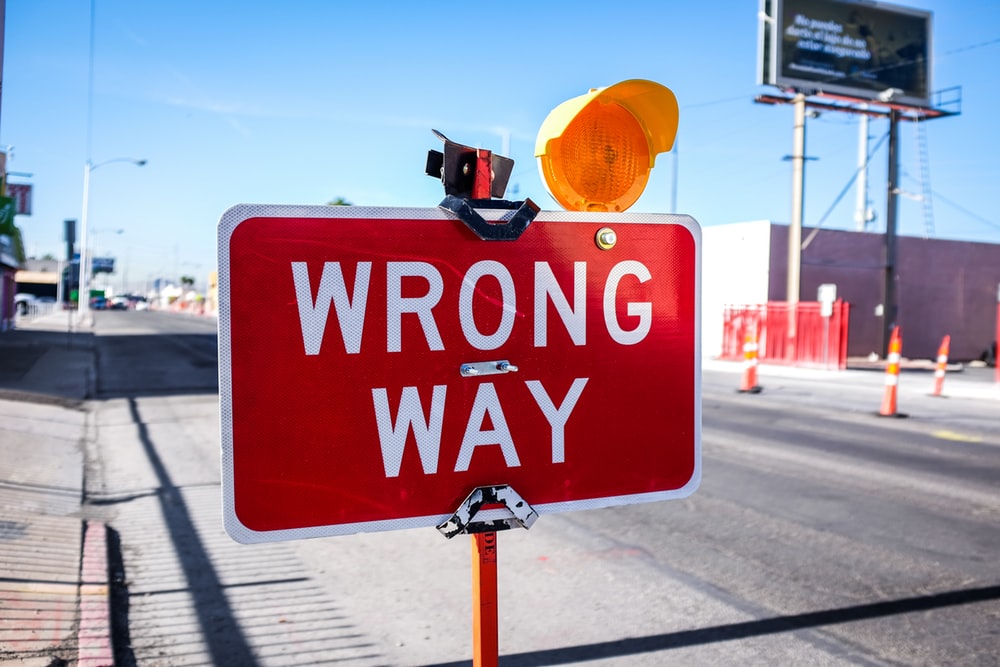
We are human and sometimes will make mistakes and bad decisions.
But, it is a shortcoming to make mistakes or wrong decisions and not correct the resultant problem. This could lead to business failures. Even worse is to repeat the same mistake over and over again. Is your business failing because of this? Or, is it an issue of commitment to making the necessary corrections?
Correcting mistakes or fixing bad decisions takes time, effort and money. These could be spent on other pursuits that are more productive and less agonizing.
It also takes a toll on employees.
No one shows up at work wanting to make corrections, whether their own or another employee’s. Sometimes a whole day is wasted doing so. At the end, nothing is accomplished. Yet, you are drained from the effort involved.
As bad as it is to make bad decisions, coming up with the wrong fix can be as destructive. Is your business failing because of this?
One of my past clients did that.
The company made modular units for housing. In their early stages, most of the units were cookie cutter. At their peak, they could turn out ten units per eight hour shift. They had 20+ workstations where various construction and assembly duties were conducted. To get the units through each station was set with the same time to complete their duties. At the appropriate time, each unit moved to the next station. Then, the next operations would be completed.
If a station didn’t complete all the work it needed to, one of two things happened:
1. The unit was moved without the work completed. Once the unit passed through all the stations, the unit was placed in a yard outside. Then, the crew from the area that didn’t complete its work had to go out and complete it. That meant they were taken from the line which then backed it up and ten units couldn’t be completed as scheduled.
2. The unit was held at the station until the work was completed. When that happened, the facility could not complete ten units for the shift.
When my company entered the picture, things had changed dramatically. Almost every unit that made was a custom unit. That meant that the work at each station varied. The shift output had decreased. The company believed that they were getting out only two units per shift. 80% lower than in their high production days. They did not account for the customization. The manning at each workstation was exactly the same as when they were turning out the ten units per shift. While they believed they were getting two units out, they were actually getting 1.5 units out per shift. This was even lower than what they thought.
The company did not stay up with the changing times. Is your business failing because of this?
Production was down 80% to 85%. Besides, they were costing each unit at the same price despite different work efforts on each. Finally, they were paying incentives to certain workstations, but not to all. This added to the loss they were experiencing on each unit. So, many bad decisions had been made. Is your business failing because of this?
We were limited in what corrective actions we could take. We were not allowed to reorganize the factory. So each workstation remained in place and the work assigned to each had to stay as they were set. The owner and his head of operations felt that if we put some fixtures in place at certain workstations that would solve all their problems.
We had done a similar project a few years prior for a truck building company. In that case, we determined the work at each station and flexed the work crew as needed. That way the time at each work station was balanced. The company could then move the trucks through the line at a standard pace. If people did not show up for work and there weren’t enough workers to crew for the time required, we could adjust the work time. Using this system, the company’s productivity grew exponentially.
We met with the owner and the operations manager to discuss this proven method. We were sure that it would work here as well. They both agreed and we worked to develop the system per their specific situation.
The project had a short duration and a limited budget.
We quickly collected data to develop the work assignment and scheduling routine. We tested it out and it worked well. But, we realized that more data would be needed to enhance it. We told the owner and manager that they should add to the database as they continued to use it. They agreed to do so.
We implemented the system and immediately got push back from the operations manager. Where he didn’t have to make crew adjustments before, he had to now.
He didn’t like this.
He wanted to keep doing what he was doing. Is your business failing because of this?
This meant setting crew sizes with no adjustments. He complained that it was too complicated and wouldn’t work. In a matter of a few days he rejected everything we had agreed upon and convinced the owner it wouldn’t work. They complained that they hadn’t been properly advised about what was entailed in the system. They also stated that with adding a few fixtures in certain workstations everything would be fine.
They scrapped a good system and continued to do what they were used to doing. Nothing changed, including the productivity. A very bad decision.

When someone ignores the advice of their consultants, we have to wonder what it is they are trying to prove.
If they do not trust their advisers, then they should be seeking other help. But if they do trust their advisers, it is a waste of time, effort and money not to heed their advice. They could have plodded along on their own and saved the resources spent on them.
Another example of a very bad decision occurred at Crayola® Corporation.
At the time we had one of the leading brush manufacturing facilities in the world.
We focused on children’s kit and adult’s fine art brushes. However, we were contacted by a leading cosmetics firm to make compact brushes for them. At the time, they were buying their brushes out of the Far East. They told us that their supplier was late with their orders. Also, they never produced the quantity ordered and the quality was terrible. Many of the brushes they received were defective and had to be disposed of.
I and the product manager developed a plan.
It would guarantee that the brushes they ordered from us would arrive when required. They would always match the number ordered. And, the quality would never be an issue. We would do this all at a cost that was one cent higher than they were paying. That cost would be offset by their cost in lost time and sales due to the poor quality they were experiencing.
To our shock, the company rejected our proposal. They would not accept one penny of additional cost beyond what they were currently paying. Instead, they decided to stay with the present supplier. This, despite all of the problems they were experiencing with them. I am sure that you would agree that this was not only a very bad decision, but more likely a horrible one.
The phrase penny wise and dollar foolish comes to mind. It also led us to wonder what other very bad decisions they were making. They are still in business today. But, their position as an industry leader has been lost to their competitors. This should not be surprising to you.
Why are companies so willing to make bad decisions?
Why seek solutions and then disregard them over pennies? Many of the students I have worked were astounded by the poor decisions made by certain clients. My advice to them was to learn and not make the same mistakes when they become leaders for their companies.
Too many companies I have crossed paths with did not learn their lessons. As they were growing up, my children regularly argued with my wife and me I that we should allow them to make their own decisions and mistakes. In that way, they contended, they would learn. We countered that they could learn by listening to us about our own experiences in such matters, saving them considerable time and pain. In some cases, we allowed them to bull ahead, knowing the consequences would not be drastic or traumatic. However, if their decisions were going to send them over a cliff, there was no way we would let them just so they could learn a lesson. Is your business failing because of this?
I try to use that reasoning in dealing with clients. It still is satisfying when they listen and do the right thing. In the end, we are all human. That is why there are control, alt, and delete buttons on computers and erasers on pencils. The problem is that too many in control, fail to use them.